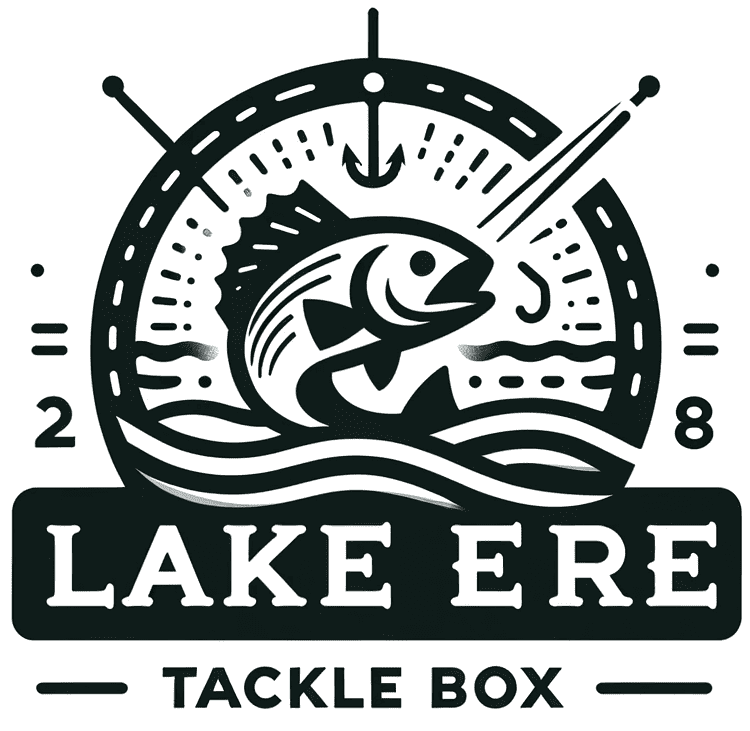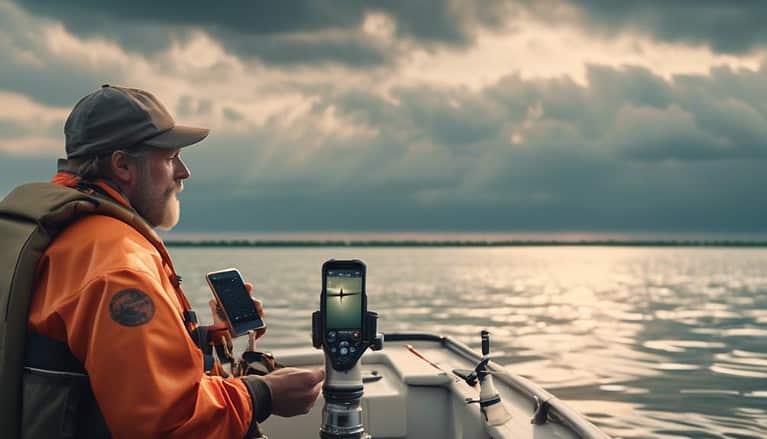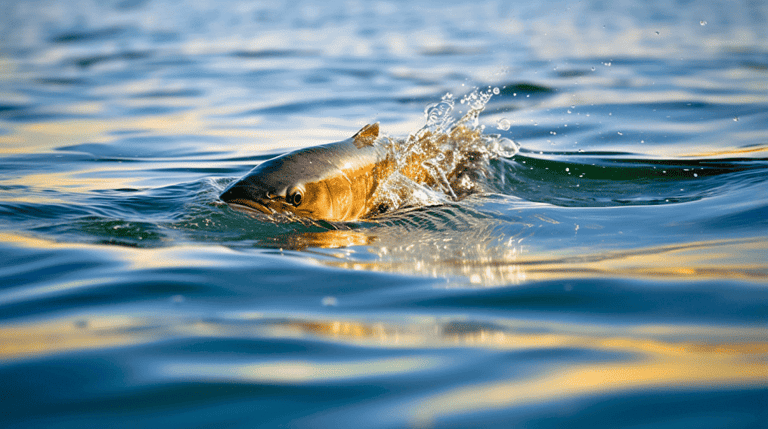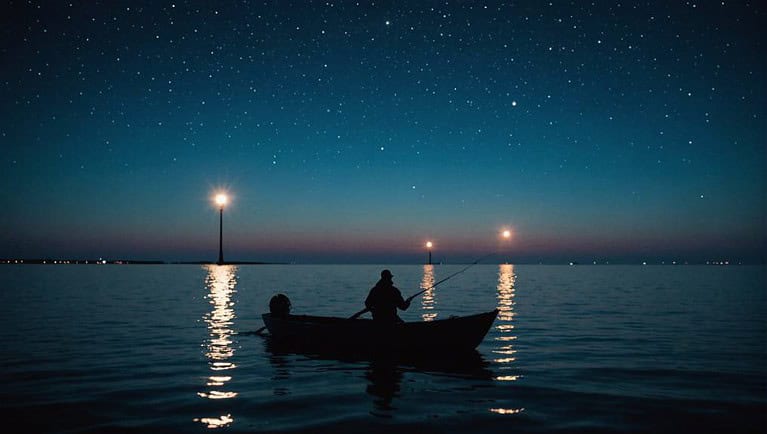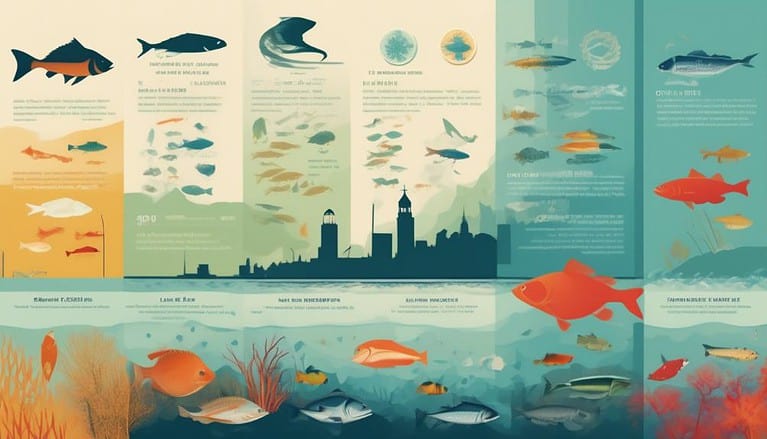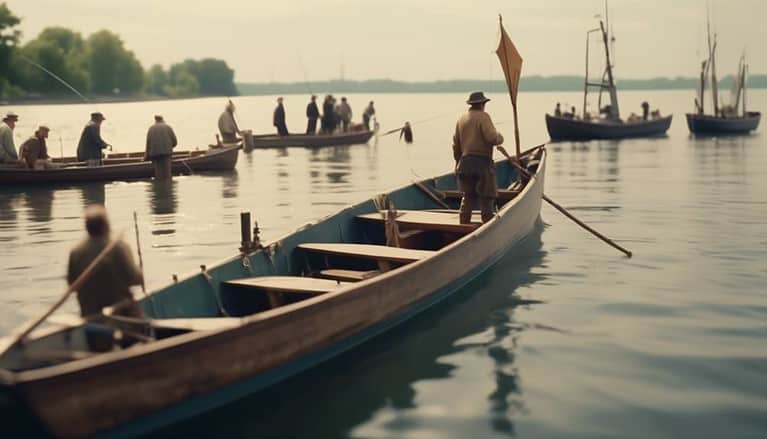Lake Erie’s Fishing Seasons: A Comprehensive Guide
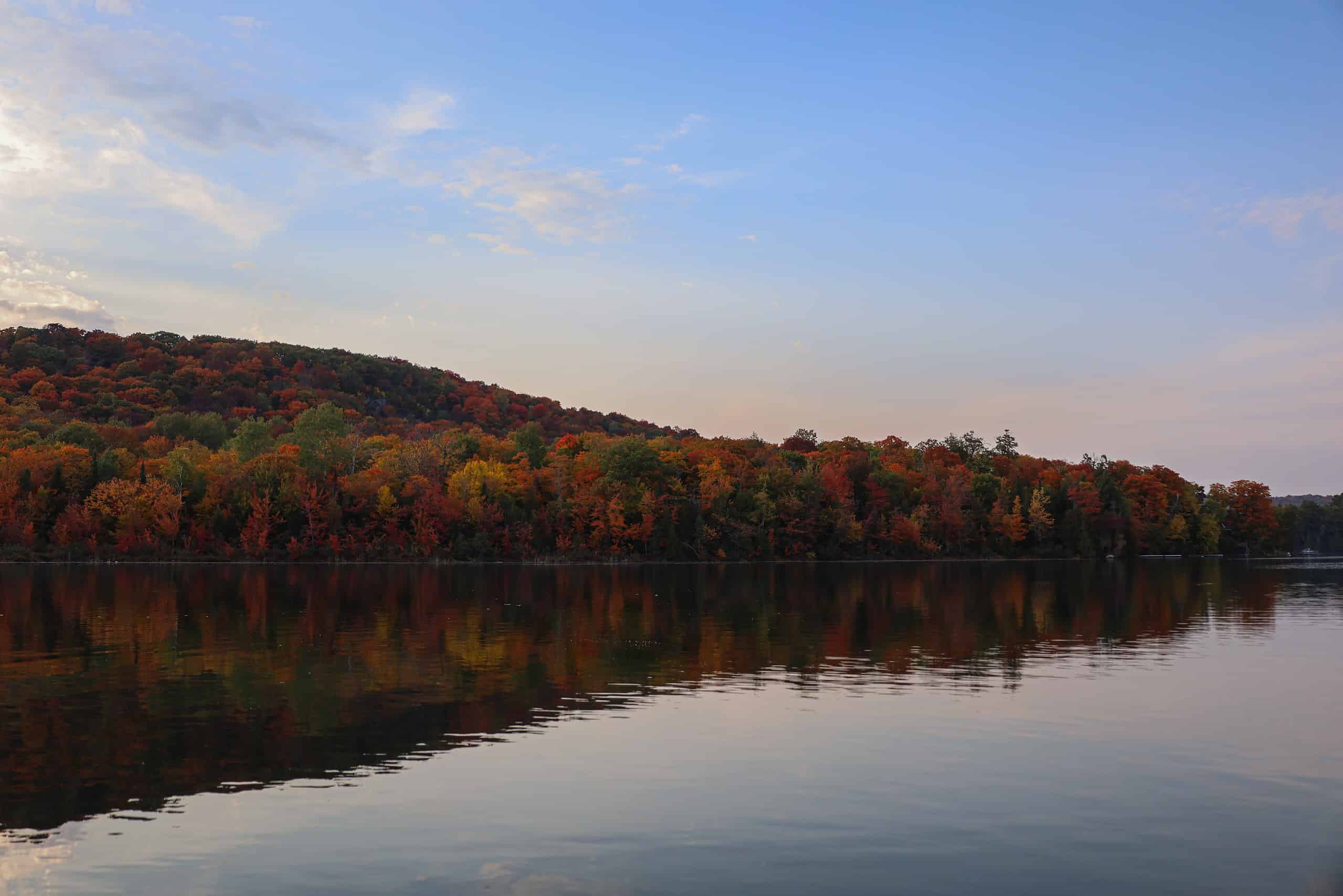
Ever wondered when’s the best time to cast your line in Lake Erie, Ohio? Don’t reel in doubt anymore! We’ve got the inside scoop on optimal fishing seasons for you.
Whether you’re an avid angler or a novice, you’ll find our guide handy. From spring’s walleye to winter’s panfish, we’ve got your year-round fishing ambitions covered.
So, ready your tackle box, because Lake Erie’s bounty awaits your discovery!
Table of Contents
Key Takeaways
- Spring is the ideal time for walleye fishing in Lake Erie, with early morning or late evening being the best times to catch them.
- Summer is a great time to catch yellow perch in Lake Erie, with nearshore areas with sand or gravel bottoms being the ideal locations.
- Fall is the time to catch steelhead trout in Lake Erie, with mid-October through December being the best time for their run into the Ohio tributaries.
- Winter offers the opportunity for ice fishing for panfish, such as bluegill and crappie, in Lake Erie.
Understanding Lake Erie’s Fish Species
Identifying the diverse fish species in Lake Erie is essential for your successful fishing adventure. You’re not simply tossing a line in and hoping for the best. You’re strategically seeking out the right catch. Knowledge of the lake’s fish species equips you to select the correct bait and fishing gear.
Lake Erie boasts an array of fish, each with its own unique characteristics. You’ll find the smallmouth bass, a fighter that favors rocky or sandy bottoms. The walleye, known for its elusive nature, prefers deeper, cooler waters. Yellow perch, a favorite among anglers, school in large numbers and are relatively easy to catch.
Understanding their feeding habits is key. Smallmouth bass feed on crayfish and small fish, making live bait effective. Walleye, on the other hand, are opportunistic feeders and respond well to artificial lures.
In essence, successful fishing isn’t just about luck. It’s a complex process, a game of knowledge, strategy, and patience. Recognizing and understanding Lake Erie’s diverse fish species will significantly enhance your experience and, most importantly, your catch.
Spring Season: Walleye Fishing
Often, you’ll find that spring is the ideal time to cast your line for elusive walleye in Lake Erie, Ohio. As the ice thaws, walleye begin their spawning migration, typically in early to mid-April. You’ll notice their movement from deep water to shallow, rocky areas, which serve as their spawning grounds. It’s during this period that walleye are most active and, consequently, most likely to bite.
You should focus your efforts on early morning or late evening, when walleye are typically feeding. Use a jig tipped with a minnow or a plastic worm, as these are proven walleye attractors. Remember, walleye are sensitive to light, so overcast or rainy days can often yield a better catch.
Pay close attention to the water temperature. They prefer cooler water, around 45-50°F. Any warmer, and they may retreat to deeper, cooler waters. Additionally, monitor the wind direction. A west or southwest wind often pushes baitfish towards the shore, bringing the walleye with them.
Summer Bounty: Yellow Perch
As summer sets in, you’ll find Lake Erie teeming with yellow perch, making it an ideal time for you to try your luck. These fish thrive in warmer waters, and the lake’s temperature usually peaks in July or August. This is when you’ll encounter sizeable schools of perch, particularly in nearshore areas with sand or gravel bottoms.
Now, you’re not just after any yellow perch. You’re seeking the larger, mature ones known as ‘jumbos.’ They’re not only a rewarding catch but also renowned for their sweet, mild flavor. To increase your chances, use live bait such as minnows, worms, or leeches, which are known to attract perch. Attach your bait to a perch rig, drop your line, and patiently wait for a bite.
However, timing is crucial. Early morning and late afternoon are optimal, as perch are most active during these periods. You’ll also benefit from knowing that perch often move in schools, so if you’ve caught one, there are likely more nearby.
While the summer months bring about an abundance of yellow perch, remember to follow regulations, ensuring sustainable fishing. With knowledge, patience, and respect for nature, you can enjoy the summer bounty that Lake Erie provides.
Fall’s Best: Steelhead Trout
Once you’ve had your fill of summer’s yellow perch, it’s time to gear up for fall’s prized catch: the steelhead trout. These silver beauties start their run from Lake Erie into the Ohio tributaries as temperatures drop, providing anglers with an exhilarating challenge.
Steelhead trout, a migratory form of rainbow trout, are known for their fighting spirit and acrobatic leaps. You’ll find them plentiful from mid-October through December. They’re not just a thrill to catch; they’re delicious, too, with a rich, robust flavor that’s a real treat.
The best approach for catching these trout is drift fishing using egg sacs, jigs, or live minnows. If you’re fly-fishing, try using nymphs or streamers. Weather conditions, water temperature, and flow rates all factor into your strategy. You’ll want to fish during overcast days and in deeper pools for the best luck.
Remember, patience and persistence are key. Steelhead trout are elusive and can test an angler’s skills. But with the right gear, bait, and a bit of luck, you’ll be reeling in these silver trophies.
Embrace the chill of fall and enjoy the thrill that’s uniquely steelhead trout fishing.
Winter Ice Fishing: Panfish
After the thrill of fall’s steelhead trout fishing, you’ll find winter brings its own icy excitement with the arrival of panfish season on Lake Erie. As the lake freezes over, you’re presented with a unique opportunity to venture onto its icy surface in pursuit of these elusive, cold-loving creatures.
Ice fishing for panfish is a careful, methodical process requiring a keen understanding of their winter habits. You need to know where, when, and how to catch them.
Here are a few key points to keep in mind:
- Panfish, including bluegill and crappie, often congregate in deeper water during the winter.
- You’ll need to drill holes in the ice using an auger and drop your line directly into these holes.
- Live bait, particularly waxworms and minnows, are especially attractive to panfish in the winter.
- Be patient. Panfish bites can be subtle in the cold, and they’re easy to miss if you’re not paying close attention.
- Dress warmly and take safety precautions. The icy conditions can be treacherous.
With the right knowledge and preparation, you’ll find that winter ice fishing for panfish on Lake Erie can be an exhilarating, rewarding experience.
Frequently Asked Questions
What Kind of Fishing License Do I Need for Lake Erie Ohio?
You’ll need an Ohio fishing license for Lake Erie. If you’re over 16, a resident license is essential. Non-residents require an annual or one-day license. Seniors get special rates. Choose wisely to enjoy your fishing experience.
Are There Any Specific Regulations or Restrictions During Certain Fishing Seasons in Lake Erie Ohio?
Yes, there are specific regulations during certain fishing seasons in Lake Erie, Ohio. You’ll need to adhere to catch limits and size restrictions, which change based on species and time of year.
What Type of Fishing Equipment Is Recommended for the Different Fish Species in Lake Erie?
You’ll want diverse gear for Lake Erie’s species. Use light tackle for perch, medium-heavy rods for walleye, and heavy-duty gear for muskie. Don’t forget a versatile line; it’s key to a successful catch.
Are There Any Guided Fishing Tours Available in Lake Erie Ohio?
Yes, there are various guided fishing tours available in Lake Erie, Ohio. They’ll provide you with the necessary equipment and knowledge to make your fishing experience successful and memorable. It’s a great way to learn and enjoy.
What Are Some Safety Precautions to Take While Fishing in Lake Erie Ohio During Different Seasons?
You should always wear a life jacket, check weather conditions, and use sunscreen. In colder seasons, dress warmly, avoid thin ice, and keep a whistle handy for emergencies. Always notify someone of your plans.
Conclusion
So, you’ve discovered Lake Erie’s diverse fish species and their optimal seasons. From walleye’s spring spectacle through summer’s yellow perch bounty to steelhead trout in fall and panfish under winter’s icy cover
This rhythm isn’t just theory; it’s experienced, analyzed, and proven. As a keen angler, you’ll appreciate these patterns, acknowledging that understanding Lake Erie’s seasonal shifts isn’t just about better fishing; it’s about respecting the lake’s complex yet beautifully orchestrated ecosystem.
